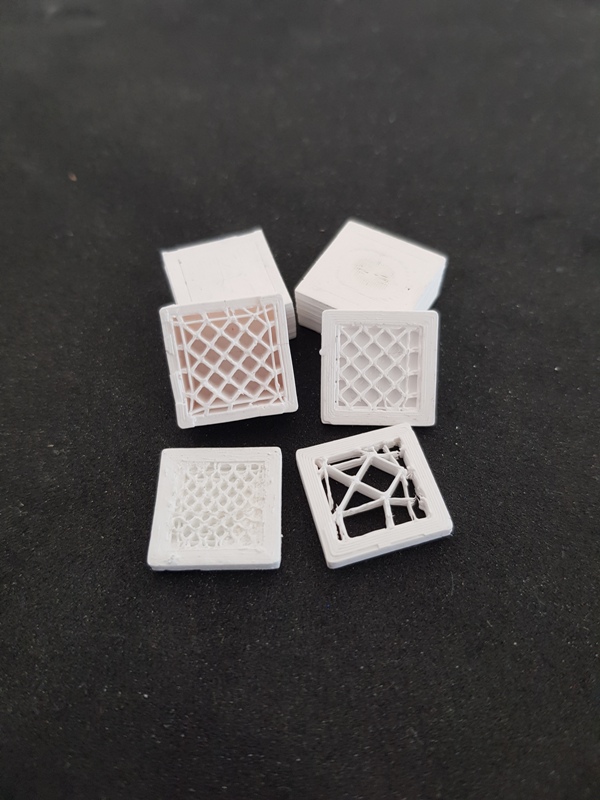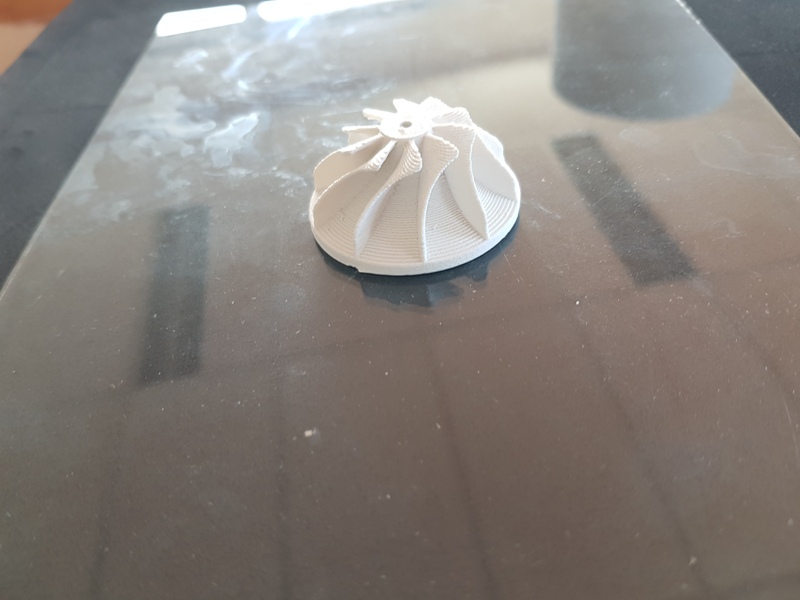Ceramics is a relatively new area for 3D printing. Some companies have been active in the space and we have products such as Olivier van Herpt’s ceramics 3D printer. These large-scale ceramics are but one part of the ceramics market, however. Technical ceramics are usually sintered ceramic components used widely in technical applications for industry. Used for applications such as bearings, guides, pumps, intakes and many other components. Technical ceramics typically have high wear, temperature and pressure resistance with low friction. Made out of materials such as zirconium oxide, aluminum oxide and other materials technical ceramics can be designed for one particular application. Microstructure and properties can be optimized and these materials outperform many others in high heat and wear resistance applications. Not widely known outside of industry these components populate our lives behind the scenes. NanoE is a company that designs, manufactures and supplies these materials to many industries. The company now has a technical ceramics 3D printer and 3D printing materials that can let you print these materials on the desktop. By making technical ceramics available on the desktop NanoE is really taking steps to expand the arsenal available to firms using desktop 3D printers. 3DPrint.com interviewed NanoE’s CEO Guillaume de Calan to find out more.

What is NanoE?
“NanoE is a supplier of Ceramic raw materials, focused on technical ceramics for high tech industries, such as Biomedical, Semiconductors, Aerospace, high wear applications… any industry where you need extreme resistance to heat, wear and corrosion. We bring to our customer state of the art raw materials, which enables better mechanical properties, better life time for the pieces and resistance to harsher environments.”
What kind of products do you make?
“We produce powders and mix of powders with binders, which are used by our customer to actually produce ceramic parts. Typical products are alumina, zirconia and alumina/zirconia composites (ZTA).”
How did you end up making 3D prining materials?
“At NanoE we have always strived to maker our products as user friendly as possible. This has led us to adapt our powders to different shaping process used by our customer, such as pressing, casting, and Ceramic Injection Molding.
The next logical step was to produce raw materials for 3D printing. Using our experience in Ceramic Injection Molding feedstocks, we started developping raw materials for 3D printing last year.”

What is Zetamix?
“Zetamix is our first line of raw materials for 3D printing. When we decided to launch 3D printing materials for ceramics, we had a look at the current market. There are a few niche players for ceramic 3D printing, but it is still very small compared to metal and plastics. One of the reasons is ceramics are difficult materials to shape and process. Another reason is that to print ceramics, you need dedicated 3D printing machines that are very expensive. We decided to take a different approach and to adapt our raw material to existing machines already on the market in number. This led us logically to start with FDM printer, and we launched a line of ceramic filament that are compatible with any FDM printer. Basically, our filament is a mix of plastic binder and ceramic powder, that you can print with FDM printer, and debind and sinter in a furnace to get a dense ceramic piece. This process is very similar to MIM and CIM (Metal and Ceramic Injection Molding).”
How would I use it?
“The material is compatible with any FDM printer, but we recommend some small adjustments. First, the filament is extremely abrasive, so you need to replace the brass nozzle by something stronger (ideally ruby or ceramic tip). Also, since the filament is quite brittle, you sometimes need to replace the extrusion gear with a smooth or a grooved version. These are really minor modifications, which will take a few hours at worst. However, for those who want to start quicker, we also supply modified FDM printers adapted to our filament.”

Step by step how do I turn this into a final part?
“Once you have printed your part, there is a solvent debinding stage (dipping the piece in a specific solvent for a few hours), drying, and then sintering of the piece in a high-temperature kiln, up to 1550°C. A small furnace can be found quite easily, and Nanoe can advise on the best furnace for our materials. After sintering, the piece will have shrunk of approx 20%, and will be full ceramic, with very good levels of density, up to 99%.”
For what would I use the alumina product? And YSZ? And ZTA?
“All of our compositions are ceramics, so they share some common feature: high-temperature resistance, up to 1800°C, high wear resistance, electrical insulation, hardness… Depending on the material, we will aim for different applications though: Zirconia can be used for cutting tools, jewelry and esthetical parts, and dental application, while alumina will have more technical uses: high temperature, electrical insulation, wear resistance.”

Who are the intended users for these products?
“The first application we see is for our current customer making technical ceramic parts. This new process will complement their more traditional processes to make prototypes, small series, and highly technical parts. On a longer term, we see obvious applications in jewelry, medical and aerospace industry.”
What do these products mean for desktop 3D printing?
“We believe that our Zetamix products for ceramic, and later for metal, will make 3D printing of ceramic and metal affordable for any kind of company. This could mean more and more applications for 3D printing, that will in a second time lead to production on more industrial machines.”
What is the cost of the filament and the machine?
“The machine costs 5000€. The filament price depends a lot on material and quantities.”
Subscribe to Our Email Newsletter
Stay up-to-date on all the latest news from the 3D printing industry and receive information and offers from third party vendors.
You May Also Like
3D Printing News Briefs, April 13, 2024: Robotics, Orthotics, & Hypersonics
In 3D Printing News Briefs today, we’re focusing first on robotics, as Carnegie Mellon University’s new Robotics Innovation Center will house several community outreach programs, and Ugogo3D is now working...
Rail Giant Alstom Saves $15M with 3D Printing Automation Software 3D Spark
3D Spark has entered into a three-year deal with the rail giant Alstom. Alstom, a transport behemoth with annual revenues of $16 billion, specializes in the manufacture of trains, trams,...
Meltio Expands Global Reach with New Partnerships in the Americas and Europe
Spanish 3D printing manufacturer Meltio has expanded its sales network across the globe. With the addition of three new partners in the United States, Brazil, Argentina, and Italy, Meltio aims...
3D Printing Webinar and Event Roundup: April 7, 2024
Webinars and events in the 3D printing industry are picking back up this week! Sea-Air-Space is coming to Maryland, and SAE International is sponsoring a 3D Systems webinar about 3D...































